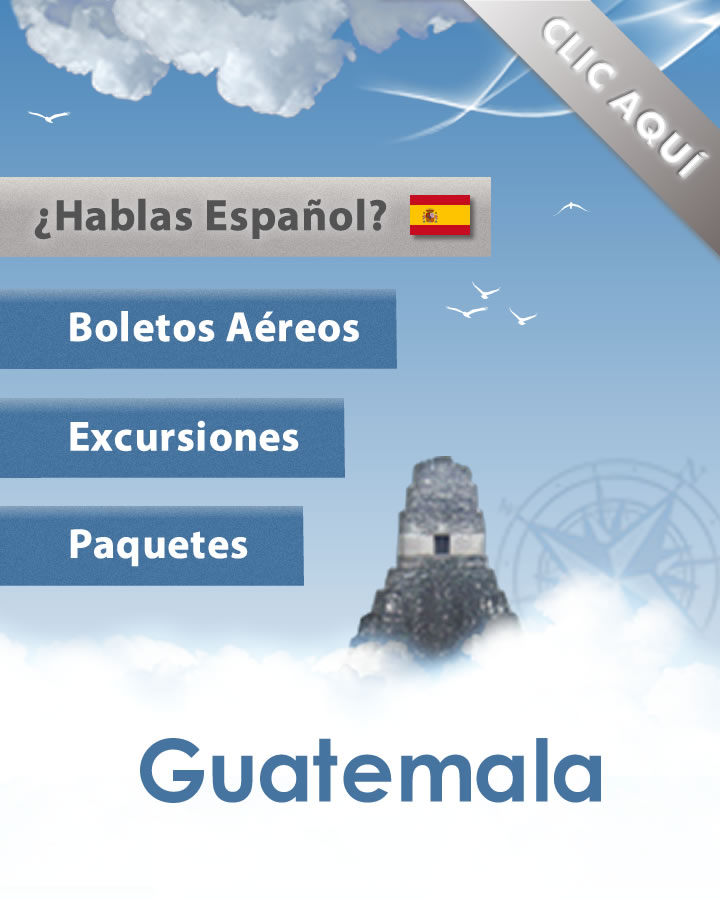Festivities, Festivals and Holidays in Guatemala
Each town throughout the country celebrates fiestas with different social, cultural, and sporting events. Many are similar , but two not to miss are: Fiesta of Todos Santos Cuchumaranes, October 21 thru November 1 and Fiesta of Chichicastenango, December 13 thru 21.
All Saints Day in Todos Santos
November 1st is one of the most important days in Guatemala. On this day they celebrate the Day of the dead. Cementaries are visited and decorated to remember loved ones. It is a mixture of acient pagan beliefs and Catholic traditions brought by the Spanish in the 16th and 17th centuries.
Easter week in Guatemala
Easter week is one of the most colorful times to visit Guatemala. Each of the indigenous Indian groups perform religious and folkloric traditions. One of the best places to see this is in Antigua. Locals participate in processions through the streets carring statues of Christ dragging, carring or nailed to the cross. They are colorful processions that march on intricately laid saw-dust rugs on the village streets. The processions are held throughout the hole town. Other town with traditional parades include Huehuetenango and Totonicapan. The churches in Guatemala City also hold processions through the streets of the capital. Follow the link to find more detailed information about Holy Week in Guatemala.
Folkloric Festival of Rabinal Ajau - The Paabanc
Probably the most impressive festival of Indian Traditions in Guatemala os the traditional dance of the Paabanc. The Paabanc is a "fiesta" or celebration of the kekchies, carried out by what is the highest Indian organization a is the "cofradia" (Brotherhood of leaders). The celebration is in honor of a saint, who is served, hosted and feasted during the entire time of the festival. The essential elements of the feast are the saint, the food and the dances. The first achieves an almost sacred character.
The saint who is honored has remained in a home for a year. The household head of which, be it man or woman - El Chinam or La Chinam - is responsible for the organization of the feasting, aided by the "cofradia", to carry out specific chores for the food, be it serving, cooking, decorating, etc.
Each guest is offered a hot drink, "un trago de cacao", who in turn offers a gift to the saint called Mayaj. When all the guests are present they proceed to eat a meal which consists of soup, meat sauce, (Kak-ik when turkey is served), tortillas, little tamales and Boj liquor. At this time food is also taken to the saint, who has remained in his special place or main altar all this time. Food can not be thrown away so what is left is handed out to the guests who take it home.
The dances begin with three "sones", danced by the Chinams, or majordomos in honor of the Father the Son and the Holy Spirit. During the festivities lots of firecrackers are set off in the belief that these are messages from the world to the most remote places. Another significant element is the physical appearance of the personalities of the "cofradia" during the ceremony, which nearly seem to reach levels of representation of living portraits.
The dances performed are legacy of religious missionaries, aremembrance of things past, and the opportunity taken to tell stories and legends to children and grandchildren. The most represented dances are Baile de s Moros y Cristianos, Baile de los Moros y Cristianos, Baile de los Venados, Tigres y Monos, and the Baile de los Toritos.
If towards the end of June a home can be seen decorated by motifs of the sun, moon and stars, this is indicative that the ritual of the Paabanc has taken place here.
Anthropologically, some see this celebration as rituals of transmission of power within the Indian social structure. It is certain that these ceremonies have great religious and social importance to them, and help to preserve faith, traditions and customs.
Although the celebration takes place nearly everywhere in Alta Verapaz it is really in the small towns of the interior where it can be appreciated in its purest form. The fact that the Folkloric Festival, the local fair and the Paabanc are sometimes celebrated at the same time is coincidental, as they have nothing to do with each other.
Flying of Giant Kites in Santiago Sacatepéquez
The village locates 15 milles from Antigua starts All Saints Day with the gathering of the villagers and a procession through the streets to hte cementeries. Once there, they fly giante kites "to communicate with loved ones who passed away". The giant kites have messages tied to the tails for hte deceased and special petition to God. The celebration end with a traditional meal called fiambre.
Celebration of Santo Tomas the Patron of Chichicastenango
Every December, celebrations begin with local Indian groups honoring God and tradition. Take time to admire the Palo Volador where locals, dangling from a rope, swing around a pole in the central plaza.
National Holidays:
New Years Day |
January 1st. |
Labor Day |
May 1st. |
Army Day |
June 30th |
Guatemala City |
August 15th |
Independence Day |
September 15th |
Revolution of 1944 |
October 20th |
All Saints Day |
November 1st |
Christmas Eve |
December 24th |
Christmas Day |
December 25th |
New Years Eve |
December 31st |
Share with Friends:
Share on Facebook Share on Twitter Share on Google+
